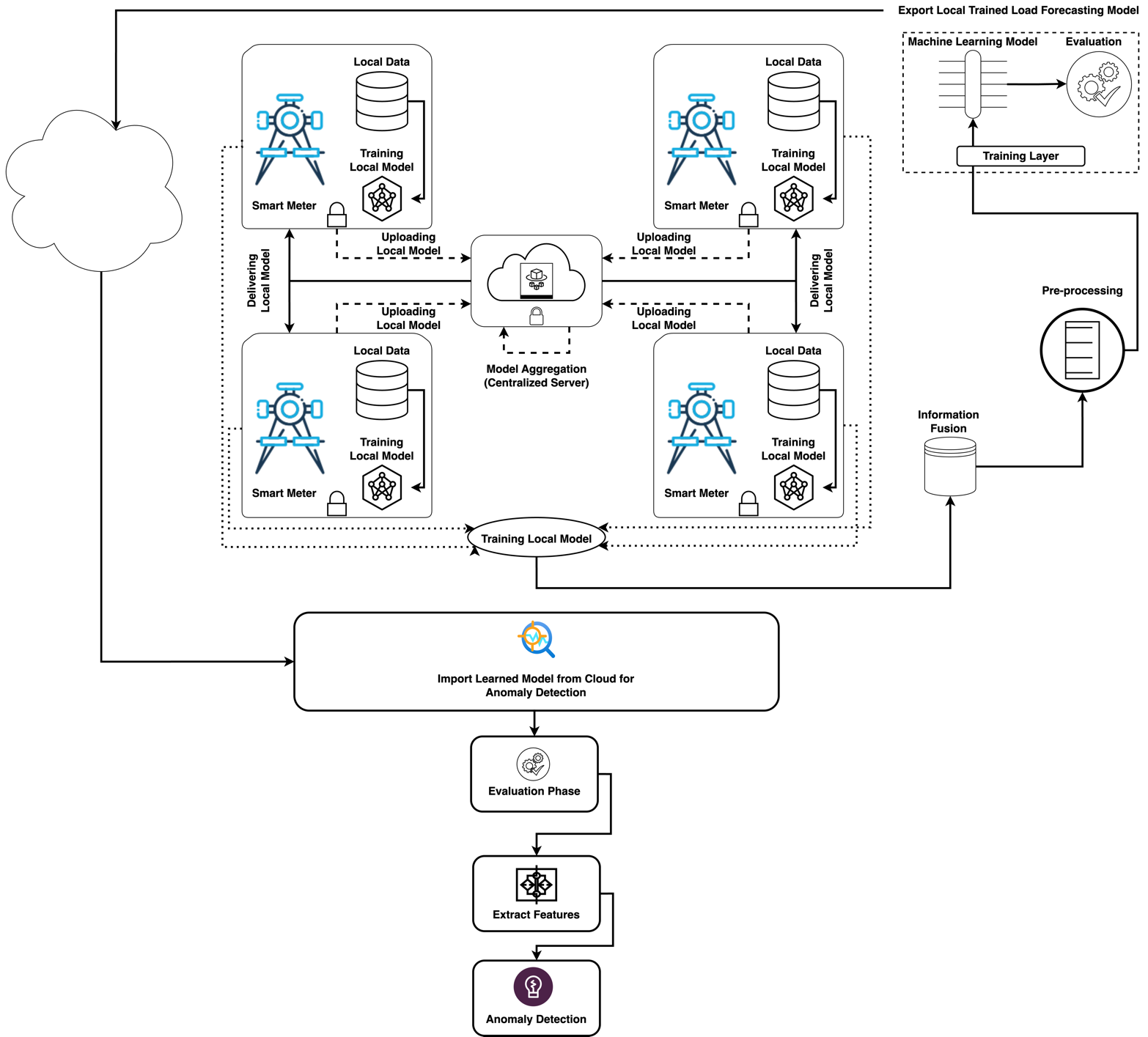Abstract
The wide-ranging expansion of smart grid networks has resulted in insurmountable difficulties that must be overcome to ensure the security and reliability of crucial energy infrastructures. The information system can be subjected to threats such as cyber-attacks or hardware malfunctioning resulting in a data integrity compromise which implies that the system will consequently not operate correctly. Anomaly detection methods that are relying on centralized data aggregation are problematic to the issues of data privacy and scalability resulting from such approaches. In this paper, we present a completely distinct approach that is based on federated learning that is employed in anomaly detection of smart grid networks that makes it possible to learn collaboratively in a decentralized way and in the same time protecting user privacy through connections between many grid nodes. The method integrates multi-source information fusion, incorporating smart meter readings, IoT sensor logs, and substation performance metrics to enhance anomaly detection accuracy and robustness. Tests show that the system is among the top or the best systems that have successfully identified a wide range of anomalies, have required low communication overhead, and have exhibited scalability. These findings imply that the use of federated learning presents an attractive direction for future work on the enhancement of the security and resilience of smart grid networks amidst changing threats.
Keywords
federated learning
anomaly detection
multi-source information fusion
smart grids
privacy-preserving
cybersecurity
Data Availability Statement
Data will be made available on request.
Funding
This work was supported without any funding.
Conflicts of Interest
The authors declare no conflicts of interest.
Ethical Approval and Consent to Participate
Not applicable.
Cite This Article
APA Style
Ahmad, M., & Rehman, A. (2025). Multi-Source Information Fusion for Anomaly Detection in Smart Grids Using Federated Learning. Chinese Journal of Information Fusion, 2(2), 157–170. https://doi.org/10.62762/CJIF.2025.220738
Publisher's Note
ICCK stays neutral with regard to jurisdictional claims in published maps and institutional affiliations.
Rights and permissions

Copyright © 2025 by the Author(s). Published by Institute of Central Computation and Knowledge. This article is an open access article distributed under the terms and conditions of the Creative Commons Attribution (CC BY) license (
https://creativecommons.org/licenses/by/4.0/), which permits use, sharing, adaptation, distribution and reproduction in any medium or format, as long as you give appropriate credit to the original author(s) and the source, provide a link to the Creative Commons licence, and indicate if changes were made.


 Submit Manuscript
Edit a Special Issue
Submit Manuscript
Edit a Special Issue

 Copyright © 2025 by the Author(s). Published by Institute of Central Computation and Knowledge. This article is an open access article distributed under the terms and conditions of the Creative Commons Attribution (CC BY) license (https://creativecommons.org/licenses/by/4.0/), which permits use, sharing, adaptation, distribution and reproduction in any medium or format, as long as you give appropriate credit to the original author(s) and the source, provide a link to the Creative Commons licence, and indicate if changes were made.
Copyright © 2025 by the Author(s). Published by Institute of Central Computation and Knowledge. This article is an open access article distributed under the terms and conditions of the Creative Commons Attribution (CC BY) license (https://creativecommons.org/licenses/by/4.0/), which permits use, sharing, adaptation, distribution and reproduction in any medium or format, as long as you give appropriate credit to the original author(s) and the source, provide a link to the Creative Commons licence, and indicate if changes were made. 